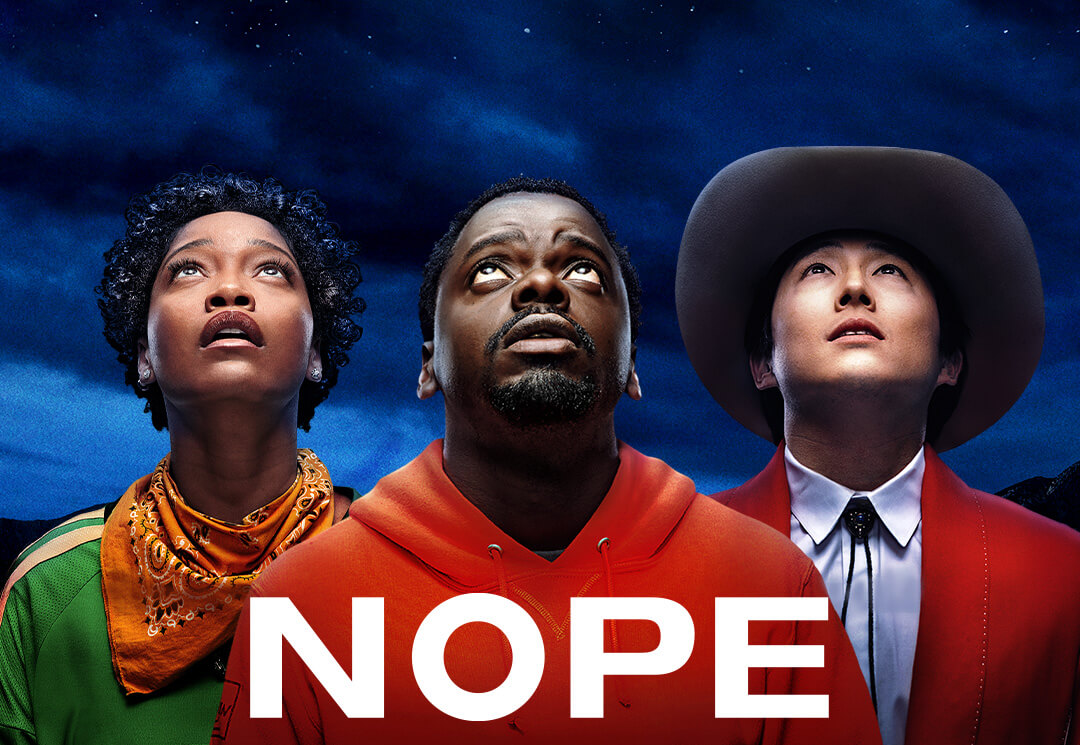
Jordan Peele’s Nope Explained: Themes and Symbolism
Jordan Peele’s latest cinematic offering, “Nope,” has undoubtedly left audiences and critics alike captivated, perplexed, and eager to unpack its multifaceted layers. As a director known for his ability to blend horror, social commentary, and thought-provoking narratives, Peele has once again delivered a film that challenges the traditional expectations of the genre.
In this in-depth analysis, we’ll delve into the key themes, symbolism, and societal critiques that lie at the heart of “Nope,” exploring how Peele masterfully subverts the audience’s preconceptions and invites us to engage in a deeper, more nuanced exploration of the film’s underlying messages.
Inspiration and Tributes: Peele’s Cinematic Influences
As a self-proclaimed cinephile, Jordan Peele has never shied away from acknowledging the cinematic influences that have shaped his own filmmaking style. In “Nope,” the director pays homage to several iconic directors and their works, creating a rich tapestry of references that add depth and complexity to the film.
One such connection can be drawn to the work of Steven Spielberg, particularly his seminal film “Jaws” (1975), which is widely regarded as the first modern blockbuster. Peele’s approach to “Nope” shares a similar sensibility, as he seeks to deconstruct the typical tropes of the summer blockbuster while exploring the underlying themes of human relationships and the societal obsession with spectacle.
As film critic Ben astutely observes, “Nope” can be seen as a “similar directional” to Spielberg’s “Jaws,” in that it is not merely a film about a mysterious entity, but rather a deeper exploration of the relationships and dynamics that emerge in the face of a looming threat.
The Spectacle and the Pursuit of Notoriety
At the heart of “Nope” lies a profound examination of the human obsession with spectacle and the pursuit of notoriety. Peele masterfully weaves this theme throughout the film, presenting a multifaceted exploration of how individuals and society at large consume and commodify extraordinary events.
The Emerald and OJ’s quest for the “definitive” footage of the mysterious entity serves as a metaphor for the modern-day desire for instant gratification and viral content. Their relentless pursuit of this “proof” reflects the societal pressure to capture and share the most sensational moments, often at the expense of deeper understanding.
The character of Jupe, played by Steven Yeun, represents the darker side of this spectacle-driven culture. His traumatic past experience with a chimpanzee attack has shaped his perception of the world, leading him to view the mysterious entity as an opportunity to capitalize on and reclaim his own moment of notoriety.
The film also critiques the role of the media and social platforms in fueling this obsession with spectacle. The presence of paparazzi and the TMZ-esque coverage of the events highlight the ways in which the public’s insatiable appetite for sensationalism can lead to the exploitation and dehumanization of those caught in the spotlight.
By subverting the audience’s expectations of a traditional “alien encounter” narrative, Peele invites us to reflect on our own relationship with the consumption of content and the pursuit of attention-grabbing moments. The film’s ambiguous ending leaves room for interpretation, challenging the viewer to consider the broader implications of this societal fixation on the extraordinary.
Reclaiming Forgotten Histories and the Importance of Representation
Alongside its exploration of spectacle and notoriety, “Nope” also delves into the importance of reclaiming forgotten histories and the significance of representation in the entertainment industry.
The film’s references to the pioneering work of Eadweard Muybridge, a 19th-century photographer known for his studies of animal locomotion, serve as a poignant reminder of the often-overlooked contributions of marginalized individuals to the development of cinema. Peele’s inclusion of the “black jockey” character, whose name has been lost to history, underscores the need to acknowledge and celebrate the diverse voices that have shaped the medium.
Furthermore, the film’s central characters, the Haywood siblings, played by Daniel Kaluuya and Keke Palmer, represent a powerful reclamation of Black narratives in the horror and science-fiction genres. By placing these characters at the heart of the story, Peele challenges the historical underrepresentation of Black protagonists in these traditionally white-dominated genres, empowering the audience to see themselves reflected on the screen.
The film’s exploration of the Haywood family’s history and their connection to the “black jockey” character serves as a poignant reminder of the importance of preserving and honoring the contributions of marginalized communities. This narrative thread not only adds depth to the film’s thematic tapestry but also serves as a call to action for greater representation and recognition in the entertainment industry.
Navigating the Complexities of “Nope”
As Ben aptly notes, “Nope” is a film that “offers much for analysis” and is not the type of movie that provides easy, straightforward answers. Peele’s deliberate ambiguity and refusal to spoon-feed the audience with a clear-cut resolution have been the source of both praise and criticism from viewers.
Those seeking a traditional “alien encounter” narrative may find themselves frustrated by the film’s refusal to conform to their expectations. However, for those willing to engage with the film’s deeper layers and explore its multifaceted themes, “Nope” offers a rich and rewarding cinematic experience.
As Ben suggests, the key to fully appreciating “Nope” lies in recognizing the importance of the film’s exploration of memory, relationships, and the societal obsession with the spectacle. By considering these elements, the viewer can unlock a more nuanced understanding of the film’s underlying messages and the director’s artistic vision.
Embracing the Ambiguity and Engaging in Deeper Discussions
One of the most compelling aspects of “Nope” is its ability to provoke ongoing discussions and debates among viewers. The film’s ambiguous nature and refusal to provide definitive answers have sparked a wave of analysis, interpretations, and theories, all of which contribute to the richness of the cinematic experience.
As Ben mentions, there has been a campaign in the United States encouraging viewers to re-watch the film, as the complexities and layers of the narrative often require multiple viewings to fully unpack. This speaks to the depth and sophistication of Peele’s storytelling, which invites the audience to engage in a deeper level of reflection and discussion.
Embracing the Cinematic Journey of “Nope”
Jordan Peele’s “Nope” is a cinematic masterpiece that defies easy categorization and invites the audience to embark on a thought-provoking journey of exploration and interpretation. By blending elements of horror, science fiction, and social commentary, Peele has crafted a film that challenges the viewer’s preconceptions and encourages a deeper engagement with the complexities of modern society.
Through its examination of themes such as spectacle, representation, and the importance of reclaiming forgotten histories, “Nope” offers a rich tapestry of ideas that continue to resonate long after the credits have rolled. As viewers, we are invited to embrace the ambiguity, engage in deeper discussions, and ultimately, find our own unique perspectives on the film’s underlying messages.
Whether you’re a seasoned film enthusiast or a newcomer to the world of cinema, “Nope” is a cinematic experience that demands your attention and rewards your willingness to delve into its multifaceted layers. So, let us embark on this journey together, exploring the complexities of Peele’s vision and celebrating the power of storytelling to challenge, inspire, and transform our understanding of the world around us.
Read my review of Get Out













1 comentário